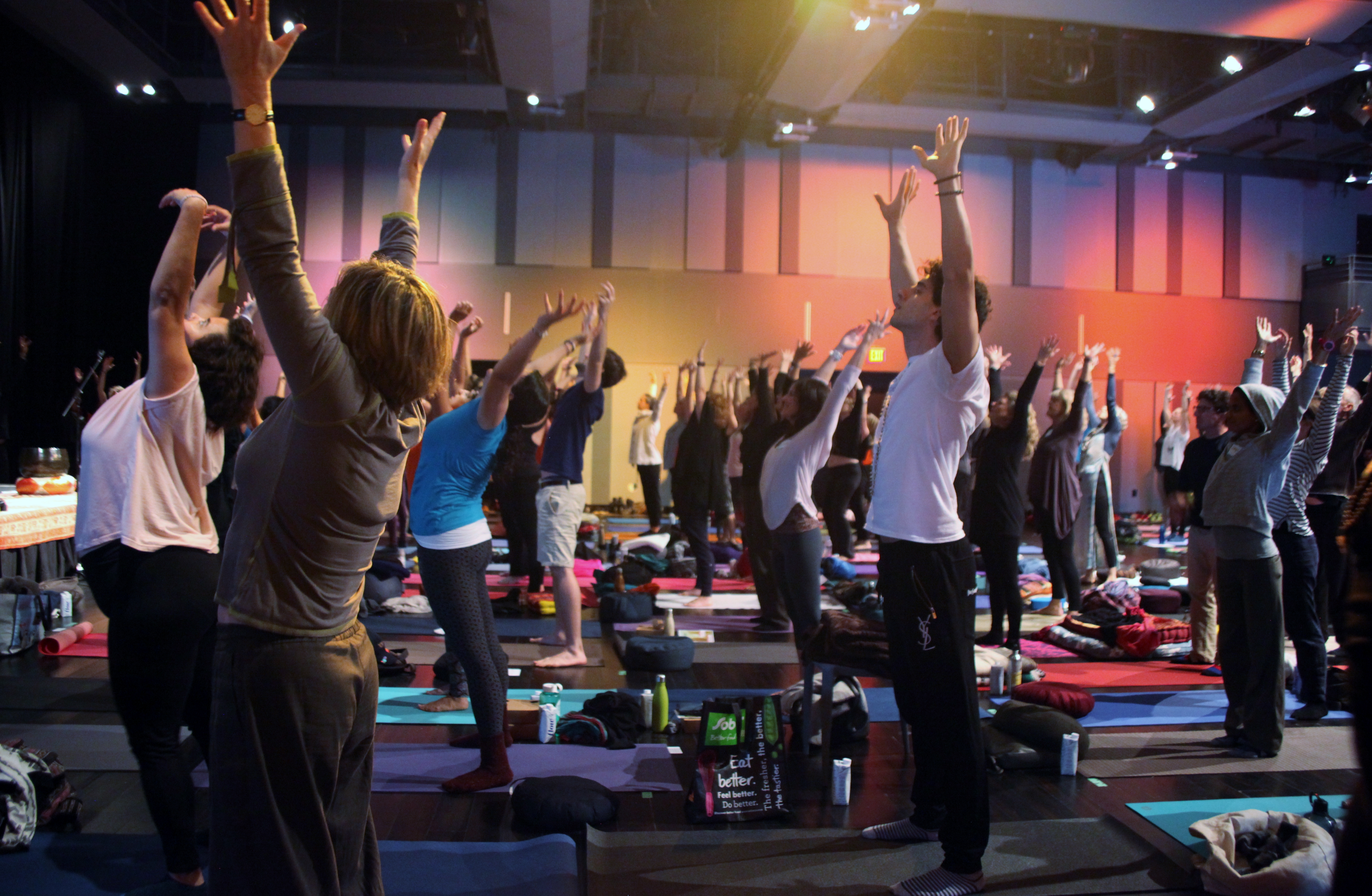
Mindfulness Challenge 2018 Fundraising
Raise Funds for Mental Health
Many people tell us they’ve been hesitant to ask people to sponsor them, but afterwards they felt great. So if you’re feeling hesitant, we invite you to breathe with the feeling, explore it, and don’t let it stop you from taking action.
Raising money to help others is an act of kindness, for both the person asking and the one being asked. They receive an invitation to practice generosity and, when the invitation is made without pressure or attachment to an outcome, it can be a real gift.

1. Set a challenging goal
Setting a challenging goal will show your donors how committed you are to the Cause, which can lead to larger donations. So consider setting a challenging goal, and upping it when you reach it. Don’t forget to track and share your progress—many people will donate a little bit more if they know you’re close to reaching your goal! And don’t hesitate to ask people to give the amount needed to advance you to the next $50, $100 or even $1,000 milestone.
2. Self donate
A self-donation is a chance to set the tone and show your personal commitment to the cause. When friends ask how much to give, you can let them know what you donated. It’s a great starting point.
3. Start early
The sooner you start, the more space you’ll have to ask people. You can start slowly, experiment with different ways of asking, and wait until your ordinary social movements allow you to ask those close to you in person or by phone, where you can give them as much or as little information as they need to decide. They may even decide to participate with you!
With the luxury of time, you can work lazily. People often need to be reminded several times before they take action, so getting started earlier and using gentle persistence really pays off.
4. Get personal
Share a story about yourself, a loved one, or someone you know. It can even be a story you heard second-hand of someone who has been impacted by a mental health condition. And consider dedicating your Challenge to someone or share a personal reason why this cause resonates with you. It will make your request that much more impactful.
And be prepared to educate your donors—they may not know about the benefits of mindfulness or the Centre for Mindfulness Studies. Learn morehere.
5. Start smart
Since donations will be displayed on your personal page, if the first pledge is high, your friends, family and colleagues will likely follow this lead and give more. So make the first asks of people you think will give larger donations.When you talk to people, and they ask what they should give, you can say “well, so-and-so gave me $____”. Or you can mention your personal donation. That way, you’re not telling them what to give, but you’re demonstrating that other people have been generous, and providing support for the person you’re asking to be generous as well.
6. Get social
Make sure everyone in your social circles knows you’re committed to this Challenge. You can receive unexpected donations by linking your personal online fundraising page to your email signature or Facebook page. Don’t forget to go to the Mindfulness Challenge Facebook page and say you’re going!
7. Ask many people
Ask everyone you have a personal connection with who can afford to give $10, $20 or more. Simply put, you need to ask! This is where being brave is important. Being kind is also important. Ask without any pressure or attachment to the result. Asking someone to sponsor you can help build a connection and re-connect with those you haven’t been in touch with for a while.
Many people report that asking people to sponsor them resulted in an outpouring of support and social requests, as well as discovering a common interest in mindfulness. When people give it makes them feel good. So asking someone to sponsor you can be a real act of kindness and connection.

Do what works for you. Some people will make great use of the tech features in our fundraising system. Others will use more traditional methods. Some will experiment with different methods. And while this website and our templates are a great starting point, make the voice your own. Why do you care about mindfulness for mental health for marginalized people? Why are you participating in the Challenge? What does your heart want to say?
9. Ask for matching gifts
Contact your Human Resources department to find out if your company has a corporate matching gift program to double the value of your personal contribution. You can also encourage donors to ask their companies for matching gift support.
10. Thank your donors
Make sure to follow up and thank those who helped you reach your goal. Send a personalized thank-you messages as soon as you receive notification of the contribution. Follow up with a letter/e-mail after the Challenge to share highlights and let them know what a great time you had.
Use the Participant Centre – the easy way to raise money quickly
It’s simple to send personalized emails to dozens or even hundreds of people. Just import your contacts, choose the Sponsor Me email template, select who you want to email, personalize it if you like, and hit the send button!
Here’s how:
NOTE: If using the mobile site, the screens are a bit different.
1. Log in to the Participant Centre – click the orange Login button at the top right of this page. Once you login, you’ll be taken to the Participant Centre and the following menu will be displayed:
2. Import Contacts – click on Address Book (4th from the left in the Participant Centre menu). Three clickable icons will appear:
- Choose Quickly Add Contacts, to import email addresses from Gmail, Yahoo, Outlook or Mac Address Book.
- A window pops up, you select one of Gmail etc, log in to your account, and then it will say “Cloudsponge would like to: View your contacts.”
- Click the Allow button. The list of all your contacts will appear. Now click the ones you might ask, or select them all. Click “Next” and they will be imported.
- Choose Manually Import Contacts to import from a spreadsheet or csv file. Select “Other” to import from a spreadsheet and follow the directions of how to set it up for importing. The file should have 3 columns in this order, and with these headers: First Name, Last Name, E-mail.
- Choose Manually Add Contacts to type them in.
Scroll down to see the contacts you added. Your own email will also be there (useful for sending a test email to yourself).
3. Send Emails – when finished adding contacts, scroll up to the Participant Centre menu and click on Email (5th from the left)
- You’ll be presented with a list of sample emails.
- Select “Sponsor Me” – a page will come up that includes your list of contacts and the template email.
- The template email includes some merge fields to customize the recipient’s name, the link to your personal fundraising page, and your fundraising goal.
- If you’d like to make some changes to add a personal touch, do so now. If you wish to save this for future use, click the Save Email Message button below. Name the message and save it. A warning always appears saying it “will overwrite any selected existing message” but it only overwrites messages with the same name. You can’t overwrite the default templates.
- Select the contacts you want to email. Use the green arrows to add or remove names.
- Click “Send Email Now” – your personalized emails will be sent, and at the top of the page it will say “Your message was successfully sent to xxx contact(s).”
4. Watch the donations start rolling in, and feel the joy!
5. Follow Up – It’s easy to see who clicked and to send a follow up email. Just login to the Participant Centre and click Follow-Ups (4th from the right in the Participant Centre menu). You can also see who donated.
If you need help, click the Online Help icon (last on the right in the Participant Centre menu) or email us at challenge@mindfulnessstudies.com.
This is not only a great way to raise money. It’s also a way to reconnect with friends and family. We encourage you to give it a try!
Fundraising Prize Levels
- Raise $250+ Recognition on The Centre for Mindfulness Studies’ website
- Raise $500+ $50 Centre for Mindfulness Studies gift certificate
- First 10 people to raise $500 win a free subscription to Mindful Magazine!
- Raise $1,000+ $100 Centre gift certificate
- Raise $2,000+ Muse brain-sensing headband ($300 value)
Awards
- Top Fundraiser Awards
- First Prize: weekend retreat at Sugar Ridge Retreat Centre, Midland
- Top Team Award: great gift pack for sharing
(Note: CMS staff and board members are not eligible for prizes or awards)
4 Steps to Lazy Fundraising
1. Start with a Large Donation
Since donations will be displayed on your personal page, if the first pledge is high, your friends, family and colleagues will likely follow this lead and give more. The first donation sets expectations for all that follow. So either make a large self-donation or make the first asks of people you think will give larger donations.
2. Email your Contacts
After you have one or more large donations, email people who might be interested in supporting you to achieve your fundraising goal. Remember that giving feels good, so don’t hesitate to ask unless you know they really can’t afford it. And ask without any expectation they will give. Use our Emailing Tools to make this easy – see below. If you use regular email, don’t forget to include a link to your personal fundraising page.
3. Ask In-Person
While emails are great, they often go unread or are merely glanced at without much consideration. Asking in person means you have their attention and can answer any questions they have. If you want to go “old school” download a pledge sheet (link at the bottom of every page on this website).
The sooner you start, the more space you’ll have to ask people. You can start slowly, experiment with different ways of asking, and wait until your ordinary social movements allow you to ask those close to you in person or by phone. They may even decide to participate with you!
4. Follow Up
People often need to be reminded several times before they take action, so getting started earlier and using gentle persistence really pays off. Once you’ve made the first ask, follow ups are easy. And with our Follow Up tool(login to the Participant Centre) you’ll see who’s already donated, how many emails have been sent to each person, and the date of the last email.
With the luxury of time, you can work lazily and reach your goal with kindness and ease!
For the past six years, the Centre for Mindfulness Studies has emerged as the leading provider of professional mindfulness training in Canada. As a charity and social enterprise, the Centre is committed to making mindfulness available to everyone. We work with more than 20 social service agencies and seven healthcare partners to bring mindfulness into the communities that need it most. It’s the heart of what we do.
Learn more about how our Community Program empowers marginalized and disadvantaged people to take control of their own mental health and well-being through mindfulness-based interventions, and our community-based model of care.

